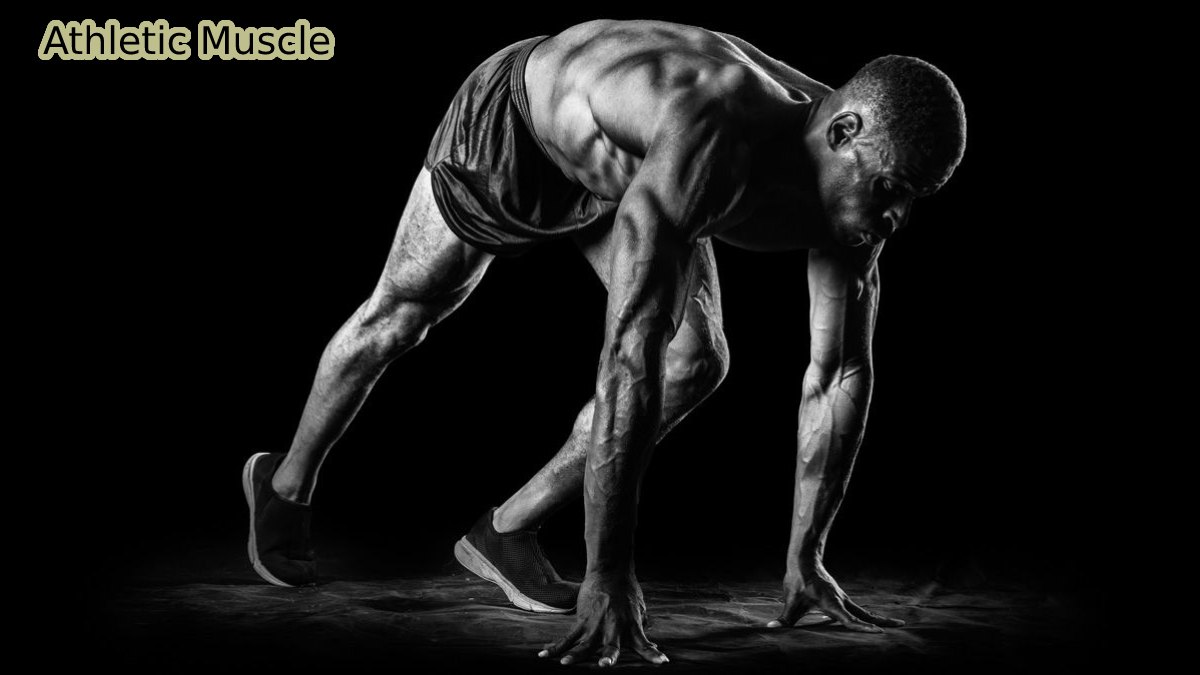Athletic Muscle – Did you know? What I am about to tell you is accurate and as affordable as you want. Exactly, because you (without you) are not going anywhere. I don’t want to cheat on you. If you have excessive body fat, you must first “let go of ballast” and start a fat loss program to get you to the optimal conditions to aim for an athletic musculature.
But if you move in a sound body but can’t make that “jump” in quality, I think you’re going to have to hang around for a few more minutes. This article is targeted at people like you, with a “yes or yes” attitude.
Table of Contents
1. MOVE LIKE AN ATHLETE TO GAIN ATHLETIC MUSCLE
Also, improve your speed, agility, and coordination.
The most relevant secret to improving performance and building muscle is to “get stronger.” But you can’t stay there. Once you have an unlimited strength base, add exercises to improve your coordination, speed, and movement.
When it comes to becoming “more athletic,” focusing your efforts exclusively on building maximal strength is just as dangerous as neglecting to train it. Most sports are not made up of barbells and dumbbells; they include jumps, throws, sprints, changes of direction, and reactive movements, so we must consist of these exercises to improve rhythm, timing, foot speed, and coordination…
The intelligent thing to do is jump rope first, rather than sprint like crazy. High-speed movements, and anything that requires direction changes, create high stress on joints, ligaments, and tendons, so use jumping rope to improve coordination and condition your tissues for impact before you begin—your sprints.
Start with 2-3 sessions/week of 15 minutes of jumping rope and then gradually move on to sprint work.
2 INCLUDES JUMPS AND THROWS
Increase your performance in the short and long term
Building an athletic body is about being able to handle what life throws at you. It would help if you increased the ability of your muscles, joints, ligaments, and nervous system to work together as a high-performance machine.
2-3 times a week, add jumps and throws to your training after activation or active warm-up. It will help you increase the neuromuscular capacity of your body and transfer the strength gained to power and athletic condition.
In addition, you will improve the recruitment of fast muscle fibers. Primarily responsible for the performance, strength improvements, and muscle gains. You increase the chances of success in your training in the short and long term.
Choose one upper body movement and one lower body movement (for example, medicine ball throws against the floor and 2-legged broad jumps) and perform three sets of 5 reps before your first strength exercise, 2 times a week.
3. BUILD A BASE OF STRENGTH
Improve your absolute strength to improve your relative
Relative strength is the amount of force about weight and muscle size. It reflects someone’s ability to control and move her body through space. In general, people with greater body weight have greater absolute strength (they can “move” more kilos), but this is not the case with relative strength, which determines our athletic abilities in most sports specialties.
Building a strength base improves your relative strength and improves your ability to generate force close to your body weight. That is, you will more easily move your body in space. This matters as you want a body that performs as well as it looks: Athletic! It would help if you had both absolute and relative strength to maximize your performance in and out of the gym.
Increase relative strength by improving your absolute power insignificant movements like deadlifts, squats, presses, etc.
Then test relative strength with activities that need you to move with your body weight, such as vertical jumps, long jumps, chin-ups, push-ups, etc.
4. KEEP NEURAL DEMAND IN MIND FOR ATHLETIC MUSCLE
Do the most intense exercises first.
Neural demand is the requirement of the nervous system for the ideal execution of an exercise.
To perform optimally and reduce your chances of injury, a program with this demand on the nervous system in mind. ” When designing and preparing your program, place the exercises with the highest neural demand at the beginning of the week and the beginning of each session.”
If you grind your squats or deadlifts when you’re excessively sleepy, your nervous system won’t signal your muscles fast enough to allow optimal technical execution.
If you cannot generate maximum force, you will be reducing the efficiency of your training while cumulative the risk of injury due to changes in execution technique. Keep the movements intense at first, then move up to higher reps with lower loads.
5. CARRY OUT ANALYTICAL EXERCISES AS A COMPLEMENT FOR ATHLETIC MUSCLE
Insert specific blocks at the end of your sessions
Specific hypertrophy should not be your primary weapon, but it does have its benefits. There is overwhelming evidence that isolated or analytical exercises (targeting a concrete muscle block) help build muscle. Aside from balancing the “asymmetrical” nature of many sporting activities and helping you achieve better nudity, cross-sectional muscle area can increase force-generating capabilities and provide organizational support for injury prevention.
You won’t benefit much from remote work until you build a significant strength base. Forget bicep curls with 22-pound dumbbells for now and work on doing pull-ups.
Get strong, and do remote work at the end of your training session in 10-15 minute blocks.
Here is an example of this block of work for shoulders :
A1) Bent Dumbbell Raises 3×12
A2) Standing Lateral Raises 3×12
A3) Discus Front Raises 3×12
Do all the exercises in a row and then rest for 60-90 seconds. Complete this process three times.


